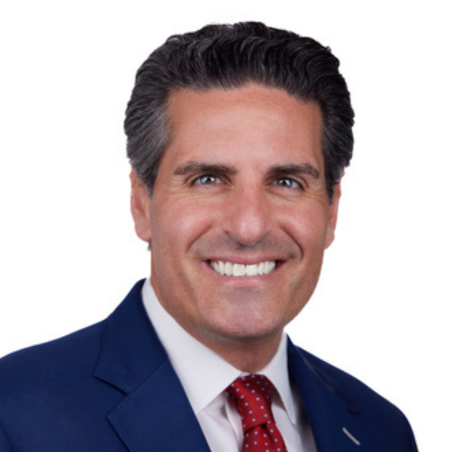With multiple unprecedented events, it’s safe to say that 2020 has been a year like no other. Now, more than ever, it is important your firm has a strong voice amid the chaos.
That being said, how do firms with limited time and resources ensure they are maximizing marketing efforts and efficiency? We will share five initiatives to help ensure you are communicating effectively and efficiently to your existing clients, prospective clients and centers-of-influence (COIs).
1. A Strong Brand is Key
The most important consideration in maximizing the effectiveness of your marketing efforts is building a strong brand. A strong brand includes:
• A consistent message clearly articulating why your firm exists
• Who you help
• Unique strategies you employ to solve a specific set of challenges
To build a strong brand, start by coordinating a brand guide including your firm’s colors and logos. These can include a one-page firm highlight piece and a more in-depth firm presentation with details on overarching philosophies, processes and resources. Ensure all the materials you publish have a consistent look and feel and maintain a consistent tone. Once you create a couple core pieces, then focus on a roadmap of more specialized pieces you can create over time to reinforce the unique aspects of your brand and your firm.
2. Clearly and Simply Define Your Value Proposition
With literally thousands of investment advisors across the country, many firms struggle to differentiate themselves. The solution to this challenge is a clear, simple, easy to communicate value proposition. Every employee should be able to clearly articulate what differentiates your firm from all the others out there in just a few sentences. An effective value proposition isolates the specific challenges your firm can help clients solve and highlights the unique tools and resources your firm has developed to solve these challenges.
3. Clearly Define your Ideal Client Type(s)
Firms that identify ideal client profiles and unique value propositions gain 26 percent more new clients and 41 percent more assets from new clients according to Charles Schwab’s 2018 RIA Benchmarking Study1. It’s not enough to simply think about the ideal client-type. Instead we suggest spending time writing down the specific attributes of the type of client you are best at servicing as well as gaining a deep understanding of what motivates this group as well as some specific challenges they often face.
For example, if your ideal client is a busy executive a few years from retirement, identify strategies that will allow you to communicate with that prospective client in an efficient manner so as not to inundate them with information they will not find valuable or will not have time to digest. Once you have a clear understanding of the type of client you are best at serving, you can more precisely craft your brand, value proposition and marketing plan to increase the probability of successfully winning more business.

4. Social Media is Critical
Many advisory firms exclude social media from their marketing plans. This is a mistake as most prospective clients will use the internet to conduct due diligence on a prospective advisor and they are likely to check social media channels where other prospective advisors are no doubt active. It is critical that firms have a social media presence consistent with their brand and which reinforces their unique value proposition.
Given the potential dangers associated with problematic posts, social media marketing efforts should be tightly controlled by firm decision-makers and not everyone should have the authorization to post. An effective social media strategy includes identifying a few social media channels on which a firm will focus. Firms do not need to waste time posting on every available channel and should focus on channels frequented most by their targeted client type.
We suggest, firms post summaries of all intellectual capital produced and should link back to the firm’s website where prospective clients can find additional information. Authorized social media users should take a few minutes each week to interact with the content on preferred social media channels with a focus on posts by COIs and other influencers that could potentially drive prospective client referrals.
5. Create a Marketing Calendar
How do firms ensure they are executing a successful marketing campaign? The first step includes creating a marketing calendar:
• Identify regular pieces that will be published as well as their frequency
• Include prompts to publish more topical content throughout the year
• Review and adjust the calendar frequently – in a year like 2020, things can change rapidly and marketing efforts need to evolve accordingly
• Use the calendar to assign tasks to specific employees to track accountability and ensure it is actually executed
Through it all, the efforts detailed in the marketing calendar should always align with the firm’s brand and value proposition.
While basic, the steps outlined are critical to developing and executing an effective marketing plan. Once these basic steps are met, more advanced efforts can be employed such as segmenting content among different groups (existing clients, prospective clients, COIs) and employing marketing analytics to understand which aspects of your plan are producing the best results. Many firms also employ third-party content creators to help them populate their marketing calendar with fresh content. For some context, our firm creates two to three pieces of content-related collateral a week that can be white labeled by our financial advisory firm clients.
For more information, please contact any of the professionals at Fiducient Advisors. if you are interested in learning more about how we utilize the tools, resources and strategies we have developed over our firm’s 25-year history. We believe marketing is just one important aspect of how we can help. After all, if your firm is not communicating effectively in the marketplace, rest assured your competitors are and you are at a competitive disadvantage.
1Charles Schwab 2018 RIA Benchmarking Study
The information contained herein is confidential and the dissemination or distribution to any other person without the prior approval of Fiducient Advisors is strictly prohibited. Information has been obtained from sources believed to be reliable, though not independently verified. Any forecasts are hypothetical and represent future expectations and not actual return volatilities and correlations will differ from forecasts. This report does not represent a specific investment recommendation. The opinions and analysis expressed herein are based on Fiducient Advisor research and professional experience and are expressed as of the date of this report. Please consult with your advisor, attorney and accountant, as appropriate, regarding specific advice. Past performance does not indicate future performance and there is risk of loss.



